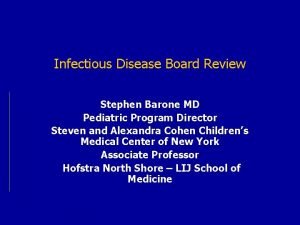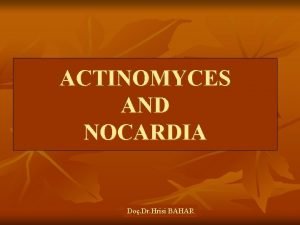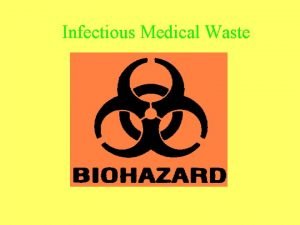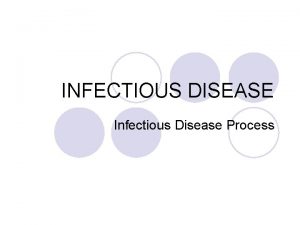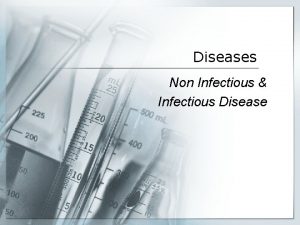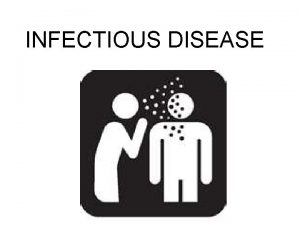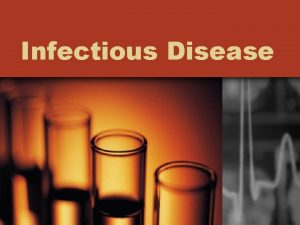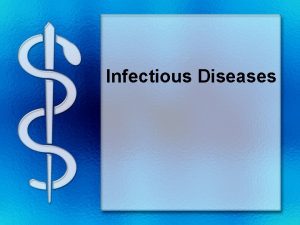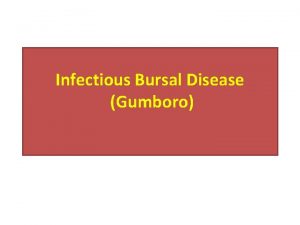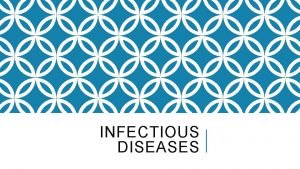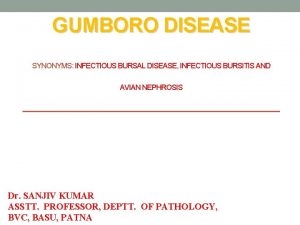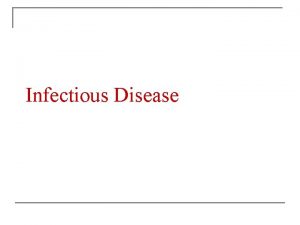Introduction to Infectious Disease Infectious Disease Key Terms

















- Slides: 17

Introduction to Infectious Disease

Infectious Disease – Key Terms • Infectious – can spread • Disease – an abnormal condition affecting the body of an organism • Pathogens – “germs”; what causes disease

Germ Theory through the Ages Germ Theory – states that diseases are caused by microorganisms Before

Before Germ Theory… • Theory of “Spontaneous Generation” – diseases were simply an unfortunate occurrence due to chance & probability Think about it….

Significant Historical Developments in Infectious Disease & Germ Theory

Anton van Leeuwenhoek • First microbiologist; Dutch; 1670 s • Used microscopes to observe and identify microscopic living organisms

Ignaz Semmelweis • Vienna, 1840 s “Childbirth fever”

Louis Pasteur • France, 1859 – Curved Flask Experiment • Essentially the definitive demonstration negating spontaneous generation

Joseph Lister • Lister, 1860 s: Antiseptics • Washed wounds to prevent infections during surgery

Taxonomy and Infectious Disease • What types of pathogens cause infectious diseases? • In what taxonomic kingdoms are they classified?

Taxonomy and Infectious Disease Archaebacteria Prokarya Eubacteria Protista Eukarya Fungi Autotrophic Plantae Animalia

Pathogen 1: Bacteria • Living – Kingdom Eubacteria (although only a small fraction of this kingdom are pathogenic) • Structure Examples – Prokaryotic cells – Produce toxins that harm host (parasitic)

Pathogen 2: Viruses • Non-living!!!! – Infect host and take over cellular metabolism to construct new viruses • Structure: – DNA or RNA core – Contained in protein capsid – Protein spikes to attach to host cells – Some have a membranous envelope – Shape can vary but all viruses are typically symmetrical Examples: HIV, Influenza, Ebola, Chickenpox

Pathogen 3: Fungi • Living – Kingdom Fungi • Structure: – Eukaryotic – Chitin cell wall – Heterotrophic (by absorbing nutrients from host) • Examples: Ringworm, Yeast Infections, Athlete’s Foot

Pathogen 4: Parasites • Living – Kingdoms Protista & Animalia • Structures: – Protozoans – single celled organisms – Helminthes – worms – Animal structures – mosquitoes, fleas, ticks • Transmitted through ingestion of eggs & insect bites • Examples: Malaria, Tapeworm, Bubonic Plague

Pathogen 5: Prions • Non-living • Structure – Misfolded proteins that cause brain and neural damage, eventually fatal • Examples: Mad Cow Disease, Creutzfeldt. Jakob Disease (CJD)

Classroom Activity: “History-Altering” Infectious Diseases 1. Your group will be assigned 1 infectious disease that altered history. 2. Research that disease with your group on www. cdc. gov or other reliable sources about one of the following diseases: • Smallpox in Native American populations during Age of Exploration/Colonialism • Tuberculosis in Industrial Revolution age (“The Great White Plague”), • Bubonic Plague in Europe (“Black Death”) • Cholera in England (England 1800 s), • Yellow fever in the Panama Canal, • Typhus (body lice) during the Thirty Years War • Polio in late 19 th-early 20 th century; • Biology/plant life extension: potato blight (cause of the Irish potato famine), • 1918 influenza in America (“Great Influenza” “Spanish flu” “Flu of 1918”) • H 1 N 1 Bird flu • Swine flu
 Infectious disease quality controls
Infectious disease quality controls Stages of infection
Stages of infection Chapter 26 infectious disease prevention and control
Chapter 26 infectious disease prevention and control Stages of infectious disease
Stages of infectious disease Infectious disease board review
Infectious disease board review Infectious disease
Infectious disease Hennepin county infectious disease manual
Hennepin county infectious disease manual What is the smallest infectious agent
What is the smallest infectious agent Like terms and unlike terms in polynomials
Like terms and unlike terms in polynomials Math combining like terms
Math combining like terms Which key activities do partners perform
Which key activities do partners perform Key partners key activities key resources
Key partners key activities key resources Communicable disease and non communicable disease
Communicable disease and non communicable disease Infectious waste definition
Infectious waste definition Infectious canine hepatitis in dogs
Infectious canine hepatitis in dogs Certain infectious and parasitic diseases
Certain infectious and parasitic diseases Infectious canine hepatitis in dogs
Infectious canine hepatitis in dogs Infectious nucleic acid
Infectious nucleic acid




